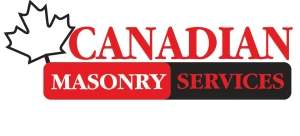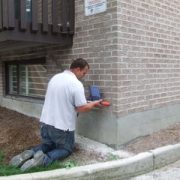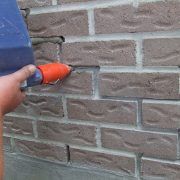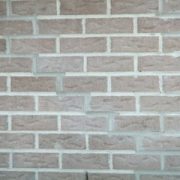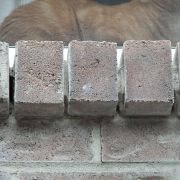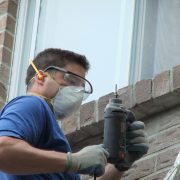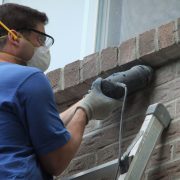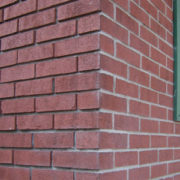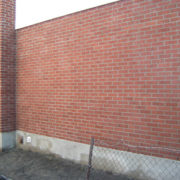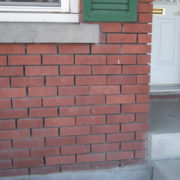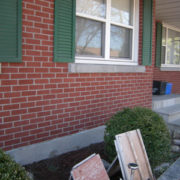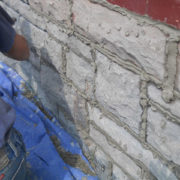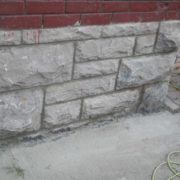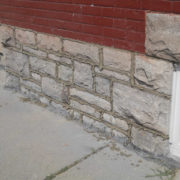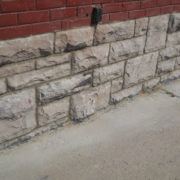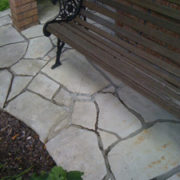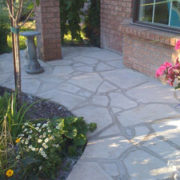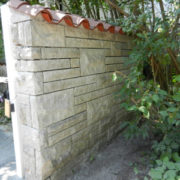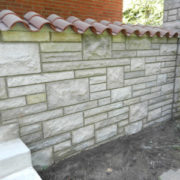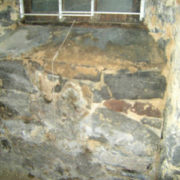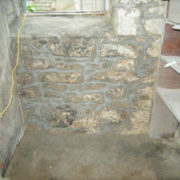Repointing
Repointing is the process of the removal of loose and or un-sound mortar between the bricks or stones and the insertion of new mortar in its place. Over time, seasonal changes, freeze /thaw effect create voids in the mortar. The continuous effect of the water expanding and contracting destroys the integrity of the mortar.
The procedure varies greatly in the removal of the mortar.
Is the repointing indoors, outdoors, commercial, residential, historical? Is it heritage mortar, lime putty from quick lime, Hydraulic lime, or modern mortar? All these cementitious compounds have their own characteristic and must be handle in specific ways.
Dust propagation, mitigation technique must be implemented. We do not know what additive may have been mix with the old mortar, as such prudence is the way to go.
For shallow repointing we clear away the joints to a minimum depth of twice the width of the horizontal joint. For serious weathering and deterioration, we may remove up to 2.5 to 4 times the width of the horizontal joint.
We will remove manually and or mechanically all the loose and unsound cementitious material in the mortar joint, thereupon we repoint the joint with appropriate mortar and matching colour. Colour matching is an art, so many factors are at play, type of mortar, type and colour of original sand.
Was the existing mortar affected by Acid rain and ecological effects of the last century?
These are some factors that Canadian Masonry Services examine before formulating the right proportion of colorant. Quality pigment is essential, Canadian Masonry Services only use Interstar pigments. Made in Canada Interstar produces a pigment made for our climate.
The final cleaning of the finish brick and masonry work
The removal of unsightly mortar residue must be removed to preserve the original appearance of the home. It is the responsibility of the mason to be cognizant of smearing and droppings. Some minor smearing unavoidable due to type of finish on the bricks and application technique. This is only a temporary issue if addressed in a timely fashion.
There are different guidelines for cleaning the masonry units, in most cases we will wash the wall with a solution of Hydrochloric acid (muriatic acid) there is a wide range of chemical agent on the market. There are three main chemical groups Acidic, Alkaline, And Organic. They all have their own characteristics.
No matter the chemical used if the proper technique is not used the process will fail. The final appearance of work and the integrity of the of the masonry units and the mortar may affected. Type of stain is their courant in the mortar, type of mortar is but a few considerations a professional bricklayer / mason must evaluate before choosing the appropriate chemical. Failure to use proper technique of application, use of the wrong cleaning agent, harsh and aggressive cleaning technique, and failure to protect the adjacent work will always lead to an unsightly finish.
With most of our residential brick work we will use hand brush and bucket to give you an aesthetically pleasing finish you deserve. This traditional method is not as harsh as other technique available. We will start by soaking your brick repair. With the use of a natural or synthetic bristle brush, we will give the brick work/repair an initial scrub. On the fallowing application a chemical agent will be added. We will dilute the chemical to the manufacture’s specification and guidelines for dilution. This will be applied with the same natural or synthetic bristle brush. One of the most important aspect of this work is the dwell time, this is the time (how long) we leave the chemical on the brick work, during this time we will work on the stubborn areas. If we are not totally satisfied with the result, we will give the brick repair a second application.
A thorough final rinse will negate and neutralize the chemical action.
